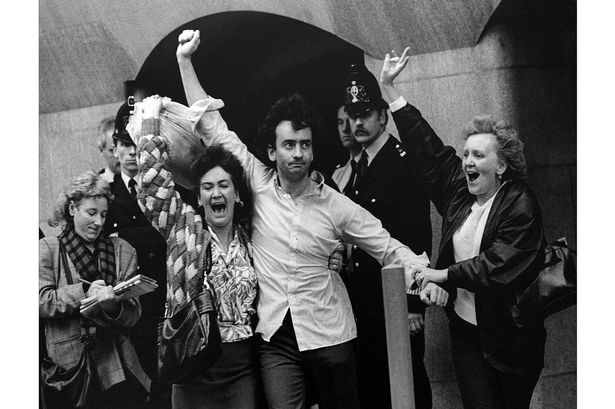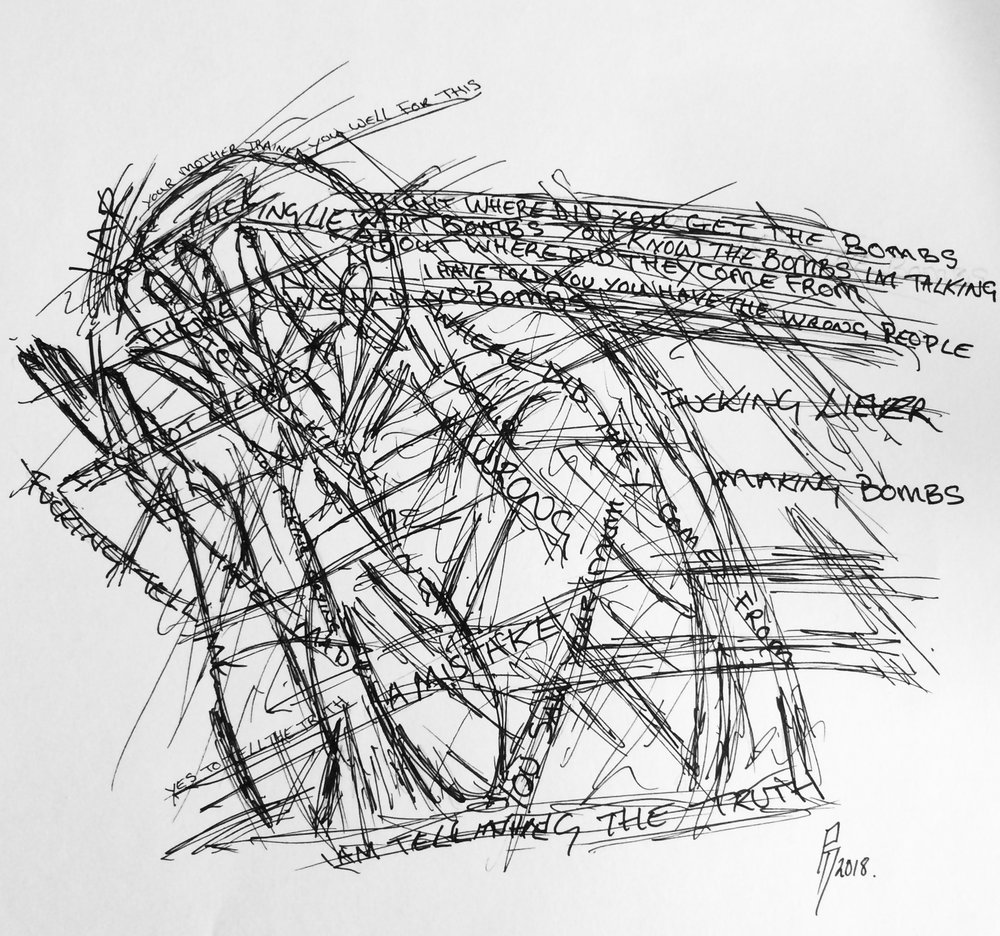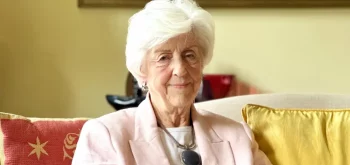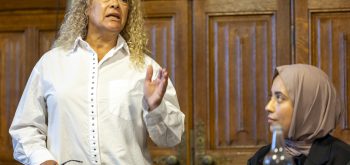‘When it is politically costly for the British to remain in Ireland, they’ll go. It won’t be triggered until a large number of British soldiers are killed – and that’s what’s going to happen.’
Danny Morrison, IRA leader 1973
By the start of 1973, the leaders of the Provisional IRA had come to believe that the British were growing weary of their involvement in the conflict and that a serious escalation of violence would push the British into withdrawal. The IRA began their first sustained bombing campaign in England, using mainly letter bombs sent by mail and firebombs planted in major cities around England.
Between August 18 and September 28 more than 40 bombs exploded in London, Birmingham and Manchester. Other bombs were found and defused, and 29 people were injured from the bombing campaign. They then chose military as well as civilian targets. Police were aware that this was their intention from information seized from a safe house after a bombing of the Claro Military Barracks in Ripon in March 1974 and other intelligence.
On October 5, 1974 the IRA detonated bombs in two public houses in Guildford containing off-duty military personnel, killing five young people and wounding some 65 others in varying degrees of severity. There was no warning that preceded this bombing specifically, but the police were aware that at least one Active Service Unit was operating on the mainland targeting the military and had been since 1973. The Coroner for Surrey at the time, Lieutenant-Colonel McEwan, opened the inquest on those who were killed and then immediately adjourned it. The inquest was never closed.
Some 46 people were arrested by the Surrey Police and ultimately four people, known as the Guildford Four, stood trial in September and October 1975 based solely on the statements that they had made to police whilst in custody without access to legal advice and after suffering, as they testified at their trial, outrageous and criminal behaviour towards them by the Surrey Police. The statements of the four were false-coerced confessions which were mutually exclusive on over 100 points. They were all convicted and sentenced to life imprisonment with very long terms to be served before parole could even be considered.
The war against imperialism is a just war
The arrest of four members of the IRA active service unit in Balcombe Street in December 1975 resulted in the Metropolitan Police being told by the members of that unit on initial interviews that they had committed the Guildford bombings and not the Guildford Four. Neither the Met nor Surrey Police made any attempt to follow up on those confessions although curiously, you may think, Surrey Police interviewed them about the bombing of the Caterham Arms (another military target) which occurred in August 1975. By then, the Surrey Police already knew of the forensic links to the Guildford and Woolwich offences from the discovery of ‘safe houses’ belonging to the active service unit in February 1975.
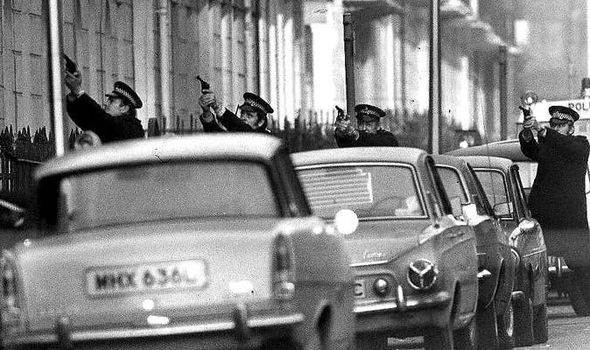 As a result, I interviewed them prior to their trial and they made full confessions of their involvement in the Guildford and Woolwich offences, giving details which could only have been known to those who had participated, and their interviews were recorded by a stenographer. They also signed statements recording their confessions. Notwithstanding those confessions – copies of which were served on the Met, Surrey Police and the DPP – and upon which a conviction was certain, the DPP decided not to include the charges in the indictment they faced in 1977 and later tried to justify this by saying that they were already serving life sentences and it would be a waste of public money to put them on trial again.
As a result, I interviewed them prior to their trial and they made full confessions of their involvement in the Guildford and Woolwich offences, giving details which could only have been known to those who had participated, and their interviews were recorded by a stenographer. They also signed statements recording their confessions. Notwithstanding those confessions – copies of which were served on the Met, Surrey Police and the DPP – and upon which a conviction was certain, the DPP decided not to include the charges in the indictment they faced in 1977 and later tried to justify this by saying that they were already serving life sentences and it would be a waste of public money to put them on trial again.
The members of the IRA unit including Brendan Dowd gave evidence at the appeal of the Guildford Four. The Court of Appeal accepted that they had done the bombings they admitted but decided that they had done them with the Guildford Four – despite a total absence of any evidence to link the two groups together and the mass of forensic evidence that excluded the Guildford Four from offences committed both before and after their arrest in November/December 1974, and which linked the ASU to the Guildford and Woolwich offences.
At their trial the Balcombe Street active service unit refused to plead to the 100 counts on the indictment because they had not been charged with the Guildford and Woolwich offences.
Joe O’Connell, one of the unit, made a statement from the dock:
‘Members of the Jury: There has been an attempt by this court to isolate certain incidents which have been called “crimes”. These incidents have been put completely outside the context in which they occurred in a way that is neither just nor consistent with the truth. The true context is that of the relationship between this country and our country – Ireland. That relationship is one of a state of war against the occupation of Ireland by Britain.
No mention has been made in this court of the violence suffered by the Irish people; of the use of internment without charge or trial in the six counties; of the conviction before the European Court of Human Rights of the British Government for the torture of Irish people; nor of the brutalities of British colonial rule. The judge has attempted to restrict the reference to bombings and shootings to ‘terrorist’ offenses. We would like to ask the judge whether the bombing of Hiroshima or Dresden were terrorist offenses? Whether the torture carried out by British soldiers in Aden and Cyprus and Hola Camp, Kenya were acts of terrorism? Whether the British were guilty of terrorism when they forced thousands of civilians into concentration camps in South Africa where thousands of them died?
We say that no representative of British imperialism is fit to pass judgment on us, for this government carried out acts of terrorism in order to defend British imperialism and continues to do so in Ireland. We have struggled to free our country from British rule. We are patriots. British soldiers in Northern Ireland are mercenaries of British imperialism. Yet none of them has ever been convicted for the murders of unarmed civilians which they had committed in Ireland. We ask the members of the jury to consider this paradox.
We are all four Irish Republicans. We have recognised this court to the extent that we have instructed our lawyers to draw the attention of the court to the fact that four totally innocent people – Carole Richardson, Gerry Conlon, Paul Hill and Paddy Armstrong – are serving massive sentences for three bombings, two in Guildford and one in Woolwich, which three of us and another man now imprisoned (Brendan Dowd), have admitted that we did.
The Director of Public Prosecutions was made aware of these admissions in December 1975 and has chosen to do nothing. We wonder if he will still do nothing when he is made aware of the new and important evidence which has come to light through the cross examination by our council of certain prosecution witnesses in this trial. The evidence of Higgs [principle scientific officer for the Crown in the Guildford trial] and Lidstone [forensic scientist] played a vital part in the conviction of innocent people. Higgs admitted in this trial that the Woolwich bomb formed part of a correlated series with other bombings with which we are charged. Yet when he gave evidence at the earlier Guildford and Woolwich trial he deliberately concealed that the Woolwich bomb was definitely part of a series carried out between October and December 1974 and that the people on trial were in custody at the time of some of these bombings.
Lidstone in his evidence at this trial tried to make little of the suggestion that the Guildford bombs could have been part of the ‘Phase One’ bombings with which we were accused with the excuse, and this appeared to be his only reason, that the bombings in Guildford had occurred a long time before the rest. When it was pointed out to him that there were many clear links between Caterham and Guildford and the time between Guildford and the Brooks Club bomb with which we were originally charged was 17 days and that Woolwich occurred 16 days later, and that equal time gaps occurred between many of the incidents with which we are charged, Lidstone backtracked and admitted that there was a likely connection.
This shifty manoeuvring typifies what we, as Irish Republicans, have come to understand by the words ‘British justice’. Time and again in Irish political trials in this country innocent people have been convicted on the flimsiest evidence – often no more than extorted statements or even ‘verbals’ from the police. Despite this often repeated claim that there is no such thing as a political prisoner in England, we would like to point out that the stress laid in Irish trials on the political beliefs of the prisoners and the fact that over the last few years convicted Republicans have been subjected to extreme brutality in English prisons. This brutality has led to prisoners being severely injured like six Republicans in Albany in September last year and to the almost constant use of solitary confinement for such prisoners. It has also resulted in the deaths of three of our comrades – Michael Gaughan, Frank Stagg and Noel Jenkinson.
We do not wish to insult the members of the Jury when we say that they are not our peers. An English jury can never be the peers of Irish men and women. We will be judged only by our countrymen. Any verdict or sentence from this court is nothing more than the continuation of the hypocrisy of British rule in Ireland and the injustice it has inflicted on our country and its people. We admit to no ‘crimes’ and to no ‘guilt’, for the real crimes and the real guilt are those of British imperialism committed against our people.
The war against imperialism is a just war and it will go on, for true peace can only come about when a nation is free from oppression and injustice. Whether we are imprisoned or not is irrelevant for our whole nation is the prisoner of British imperialism. The British people who choose to ignore this or to swallow the lies of the British gutter press are responsible for the actions of their government unless they stand out against them. As Volunteers in the Irish Republican Army we have fought to free our oppressed nation from its bondage to British imperialism of which this court is an integral part.’
Signed: Joe O’Connell, Eddie Butler, Harry Duggan, Hugh Doherty: January 1977
 Over 40 years later, on 31st October 2017, a firm of solicitors sent a letter to the Surrey Coroner on behalf of Ann McKernan, the sister of Gerard Conlon, one of the Guildford Four, who had died in 2014, asking that the inquests into those deaths be resumed. Ms McKernan died on 2nd April 2018 and the application was pursued on behalf of Ms Yvonne Tagg, one of those injured in the bombing, and Ms Cassandra Hamilton, the sister of one of the deceased. The Surrey Coroner, Mr Richard Travers, decided to reopen the inquests pursuant to his powers under the Criminal Justice Act 2009.
Over 40 years later, on 31st October 2017, a firm of solicitors sent a letter to the Surrey Coroner on behalf of Ann McKernan, the sister of Gerard Conlon, one of the Guildford Four, who had died in 2014, asking that the inquests into those deaths be resumed. Ms McKernan died on 2nd April 2018 and the application was pursued on behalf of Ms Yvonne Tagg, one of those injured in the bombing, and Ms Cassandra Hamilton, the sister of one of the deceased. The Surrey Coroner, Mr Richard Travers, decided to reopen the inquests pursuant to his powers under the Criminal Justice Act 2009.
There are two types of inquest: a traditional inquest (also known as a ‘Jamieson Inquest’) which requires the coroner to consider by what means the deceased came to their death. There are 14 different verdicts which can be reached. The other is an Article 2 inquest (also known as a ‘Middleton Inquest’) in which there is a wider reaching enquiry into not only by what means the deceased died but also the circumstances surrounding the death. For traditional inquests, ‘how’ someone died means ‘by what means’ the person came by their death. For an Article 2 inquest, ‘how’ also includes ‘in what circumstances’. An Article 2 inquest will therefore cover more issues.
The inquest into the deaths of those who died in the Birmingham Pub bombings in 1974 was also resuscitated by the tireless work of the families of the deceased. The families challenged the ruling of the Coroner on scope – specifically his decision to rule out of scope the issue of who were the perpetrators. This led to the judgment of the Court of Appeal which reversed the judgment of the Divisional Court and restored the ruling of the Coroner.
In the absence of public funding by way of legal aid, the families were unable to apply to the Supreme Court to challenge the judgment of the Court of Appeal. In part, they were refused legal aid because the Legal Aid Agency (LAA) noted that they had previously successfully used the Crowd Justice online funding platform to raise money to bring the judicial review which they had to do because there was no public funding.
The reasoning of the LAA suggests that it made both an assessment on the merits of the judicial application and decided that an applicant for legal aid who has raised money by way of public subscription should be excluded from public funding. The Hambledon judgment has narrowed the coronial jurisdiction in complex multi-death inquests. In essence the arguments advanced by the parties balanced common law tenets against European Human Rights Convention jurisprudence in this area and the law in this area remains unsettled. As solicitor Christopher Stanley put it: ‘One purpose of an inquest is to allay rumour and suspicion and to restore confidence in the Rule of Law. The two are linked the exposure of one restoring the status of the other. Ruling perpetrators out of scope meant the issue could not be put to the jury and jarred with similar issues in the Northern Ireland Legacy inquests where individual perpetrators have been named.’
The government argues that legal representation for families at inquests is not necessary as an inquest is inquisitorial and not adversarial. If that were true, why do state and public agencies inevitably have legal representation at inquests paid for out of government coffers? Further, Article 2 Inquests demand the effective participation of the family of the victim, which can only be secured through independent legal representation. This position flies in the face of the government’s stated policy. The 2009 Coroners and Justice Act was supposed to put the needs of bereaved people at the heart of the Coroner Service. Parity of representation and public funding are essential for that to be achieved. The Justice Committee of the Houses of Parliament stated in its 2019 Report: ‘The Committee did not think that bereaved people should have to go through the process of meeting the Exceptional Case Funding (ECF) requirements and the means test for legal aid where public authorities were legally represented at inquests into the death of their loved one.’ The government’s policy of commitment to ensure that bereaved families are at the heart of the coroner service is hollow and meaningless in the absence of public funding for families. In the Guildford Bombings Inquest, the families were denied Legal Aid despite a plea by the Coroner that it should be granted.
Patrick Armstrong, one of the Guildford Four, was represented by Bindmans LLP and leading counsel pro bono. He sought to become an Interested Party. This was opposed by all the other participants and rejected by the Coroner despite the fact that he had been acquitted by the Appeal Court because, as the Lord Chief Justice said when quashing their convictions, ‘The police must have lied.’ The Guildford Four are universally acknowledged to be victims of one of the most serious miscarriages of justice and for which they spent 15 years in prison. The Coroner also rejected an Article 2 Inquest.
For the inquest, the Surrey Police engaged on a massive enterprise to recover, analyse and collate all the material that existed in relation to the bombings held by various bodies and departments. It involved 12 full time staff and took from 2017 to 2022 to complete. The cost must have been massive. A fraction of that material was used in the eventual inquest because of the Inquest’s narrow scope according to the Coroner’s Ruling. Nonetheless, without legal representation, the families were left to try to make sense of all the material used in the inquest, denied the ability to make critical decisions because of the absence of legal advice and assistance, and ultimately ended up not appearing at most of the pre-inquest hearings and the final hearing after their solicitor was forced to withdraw because he could no longer afford to provide pro bono representation.
The interested parties, namely Surrey Police, the Met and the Ministry of Defence, as well as the Coroner, were represented by leading and junior counsel and solicitors; a not insignificant bill for legal services. If 5% of that total legal bill had been made available to the families of the deceased and those injured in the explosion, they could have had legal representation themselves. The Coroner has refused to supply details of his legal bill although the Coroner in the Birmingham Bombings inquest was happy to do so.
Part of the material that was collected by the Surrey Police included the material generated by the public inquiry by Sir John May carried out between 1989 and 1994 into the convictions of the Guildford Four and the Maguire Seven. The part of that inquiry that related to the Guildford Four was carried out in secret because the trial of the Surrey officers had been delayed by applications by the defendants seeking a dismissal of the charges against them because they said that they could not get a fair trial. No participation in these secret sessions was permitted by Sir John by the four or their legal representatives although all other participants including those who were responsible for the miscarriages were permitted to be present and were represented by solicitors and counsel. This material had been stored in the National Archives and was being made available to public scrutiny in dribs and drabs.
The material was to be fully opened to the public in 2021. The Home Office seized all this material in 2020 and closed it to public scrutiny for a further 75 years.
So, after a trial, two appeals, a public inquiry and an inquest, what have we found out?
No examination of how the Guildford Four came to be convicted. No examination of the role of the Surrey Police or the Met in those miscarriages. No examination of why, when they had full and frank confessions in statements and in oral evidence to the Court of Appeal, no charges were brought against the active service unit members in 1976/1977 and nothing has been done to investigate these matters in the last 46 years. The secrecy of the May Inquiry protected the reputations of the police officers, Law Officers, forensic scientists and others.
The absence of any investigations by Surrey Police or the Met ensured those reputations were not damaged and the Home Office delivered the coup de grace by sealing the tomb containing the evidence for another 75 years. And all the inquest managed to achieve was to tell the families, absent because they had no public funding and no equality of arms, what they already knew and not what they wanted to know which was who did it and why have they not faced justice. And that ‘achievement’ was at huge public expense.
Oh, and by the way the Deputy Chief Constable of Surrey Police said after the inquest closed that his force was ‘assessing whether a re-investigation is a viable option’.
I’m not holding my breath.
